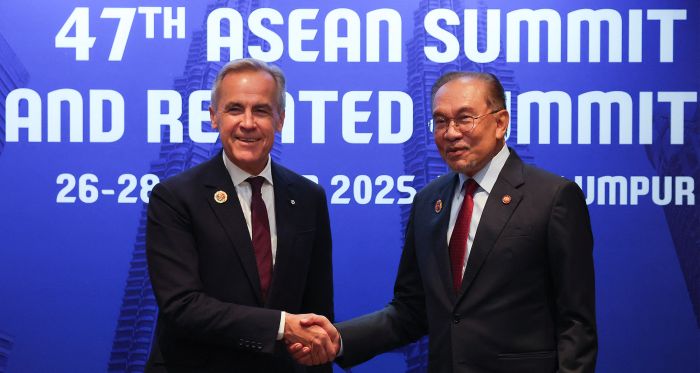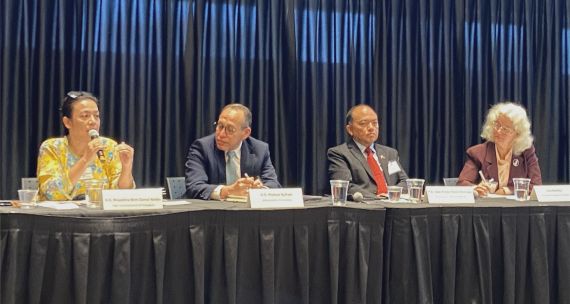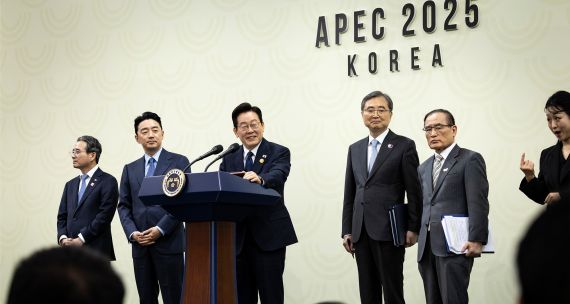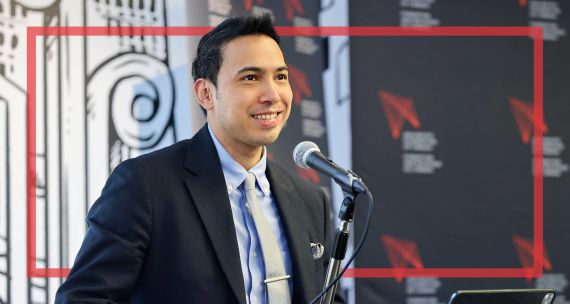Takeaway
The 47th Association of Southeast Asian Nations (ASEAN) Summit and Related Meetings, held in Kuala Lumpur, Malaysia, October 26-28, showcased both the bloc’s diplomatic strengths and its strategic vulnerabilities. U.S. President Donald Trump’s attendance dominated the proceedings, and featured the signing of legally binding trade agreements with Malaysia and Cambodia, framework arrangements with Thailand and Vietnam, and memoranda of understanding (MoUs) on critical minerals with Malaysia and Thailand. Trump also presided over the signing of the Kuala Lumpur Accord to ease border tensions between Thailand and Cambodia.
Timor-Leste’s accession as ASEAN’s 11th member strengthened the bloc’s inclusivity, although full integration of the small Southeast Asian country will require significant technical and economic support. Myanmar’s absence from the summit underscored the bloc’s internal divisions, including the challenge of balancing a commitment to non-interference with the need to address humanitarian and governance crises within its sphere. Overall, however, the summit reinforced ASEAN’s central role in the Indo-Pacific.
In Brief
- ASEAN concluded negotiations on the Digital Economy Framework Agreement, the world’s first region-wide digital economy agreement. It is slated to be signed in 2026 and will enable cross-border digital trade, services, data flows, and e-commerce across ASEAN.
- In signing the Kuala Lumpur Accord, Thailand and Cambodia agreed to withdraw heavy weapons from their shared border, and Bangkok committed to releasing 18 Cambodian detainees.
- Although Myanmar participated at the working level, the absence of junta chief Min Aung Hlaing underscored ASEAN’s continued struggle to address the country’s civil war. Myanmar will be bypassed for the ASEAN chair role in 2026; it will instead be assumed by the Philippines.
- Leaders from ASEAN dialogue partners, including Canada, China, Japan, and Australia, also attended. Prime Minister Mark Carney pledged to deepen bilateral ties with Vietnam and signed a letter of intent with Malaysia to deepen investment in liquified natural gas, nuclear, and renewable energy. He also invited Philippine President Ferdinand Marcos Jr. to visit Canada and called for expediting the Canada-ASEAN free trade agreement (ACAFTA) in 2026, and discussed deepening co-operation with Laos. Canada committed C$25 million in technical assistance to ASEAN states on the ACAFTA’s implementation.
Implications
ASEAN expands and commits to inclusivity, but its institutional limitations are still on display. Timor-Leste’s accession strengthens ASEAN’s legitimacy as a region-wide organization, but integrating this small, low-income state will test the bloc’s administrative capacity. Developmental disparities among members may widen unless ASEAN expands its technical assistance and economic integration programs.
Myanmar’s exclusion highlighted ASEAN’s ongoing dilemma of balancing non-interference with credibility on human rights and governance. Although the junta invited ASEAN to observe its December 2025 elections, the bloc declined, citing insufficient progress toward peace and inclusive governance. ASEAN leaders emphasized that any credible electoral process must be preceded by a “cessation of violence and inclusive political dialogue.”
ASEAN is navigating complex economic and geopolitical dynamics. Despite the agreements Trump signed with ASEAN member states, U.S. tariffs on those countries remain at 19 per cent for Malaysia, Thailand, and Cambodia, and 20 per cent for Vietnam. Trump also signed bilateral MoUs with Malaysia and Thailand to diversify critical mineral supply chains, an attempt to counter China’s export controls of rare earths.
Meanwhile, China and ASEAN signed an upgraded ASEAN-China Free Trade Area 3.0, enhancing economic co-operation across goods, digital services, and green technologies, while introducing measures to improve customs procedures and reduce unfair business practices. China tried to position itself as a champion of open trade, investment, and regional connectivity, and an alternative to the U.S—a message met with mixed reactions from ASEAN member states. The Philippines underscored that such co-operation cannot coexist alongside coercion.
ASEAN’s shifting strategic landscape highlights the opportunity for middle powers to diversify their partnerships. At the summit, South Korea finalized the Malaysia–South Korea Free Trade Agreement and Japan and Australia committed to continuing to provide technical and development support to the bloc. Prime Minister Carney, for his part, emphasized Canada's commitment to a stable, rules-based international order.
What’s Next
1. Implementing the Kuala Lumpur Accord and the Five-Point Consensus
Malaysia’s role, as the 2025 ASEAN Chair, in mediating a ceasefire between Thailand and Cambodia demonstrated its capacity to manage regional disputes. As the Kuala Lumpur Accord moves into its implementation phase, ASEAN will need to closely monitor compliance with the parties’ commitments to withdraw heavy weapons and begin joint de-mining operations. The Accord’s success will determine whether the agreement led to genuine progress or a merely temporary political truce.
ASEAN must also continue to monitor the protracted conflict in Myanmar, including supporting the ASEAN Troika mechanism’s efforts to implement the Five-Point Consensus and encourage constructive dialogue among all parties. The bloc also faces the challenge of ensuring that humanitarian assistance reaches affected populations and that the political situation does not further destabilize the region. Success on both would elevate ASEAN’s credibility in conflict prevention and mediation; failure would reinforce perceptions of the bloc’s limited enforcement capacity and internal divisions.
2. The Kuala Lumpur Declaration and the Philippines’ Priorities as 2026 Chair
The Kuala Lumpur Declaration on ASEAN 2045 sets the bloc’s future trajectory, emphasizing the need for a resilient, innovative, dynamic, and people-centred ASEAN. The Declaration underscores the importance of strengthening ASEAN’s institutional capacity to advance community-building efforts. As ASEAN integrates a new member (Timor-Leste) and navigates complex regional dynamics, the coming years will test its ability to maintain cohesion and adapt to evolving challenges.
The Philippines, as the incoming chair, will focus on advancing regional cohesion, economic recovery, and maritime security, with particular attention to the South China Sea. Manila’s leadership will be critical in maintaining ASEAN centrality while balancing relations with major powers.
3. Canada’s Five-Year Plan of Action
Canada’s action plan for future engagement with ASEAN will reportedly prioritize finalizing ACAFTA, expanding energy and climate co-operation, and supporting technical and capacity-building programs to strengthen ASEAN integration. With the 2021-2025 plan of action expiring, the Canada-ASEAN Plan of Action for 2025-2030 is expected to be adopted later this year, with Canada aiming to deepen strategic and economic ties across the Indo-Pacific, leveraging partnerships to promote rules-based trade, supply-chain diversification, and regional stability.
• Edited by Vina Nadjibulla, Vice-President Research & Strategy, APF Canada





